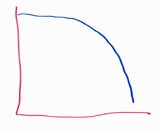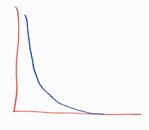I read the article too, and it read easily. If you knew nothing about CCR, and little about physics, it was an easy introduction to mCCR.This layperson newbie didn't get confused until he read the thread after reading the article. I thought the article was very well written and made an unfamiliar subject easy to understand.
But if you know "a little", the article raises a few questions. This was the paragraph that did it to me:
"Any automated flow of oxygen must be adjustable though. As we descend in the water column, diving physics increases our partial pressure of the oxygen, which means we need to add less oxygen into the loop. For the eCCR diver, the computer simply opens the solenoid valve less often. For the mCCR diver, the ‘trickle’ of oxygen is automatically limited based on the increase in water pressure. This is because the oxygen first stage regulator is a fixed intermediate pressure."
The problem this raises is that "adding less oxygen" just isn't correct, though opening the solenoid less frequently is correct.
And then (if you know a little) an "automatically limited" trickle of oxygen from a CMF due to increasing ambient pressure issues raises a red flag. The whole point of the CMF is constant mass flow despite changing pressure up to the point that ambient is greater than half of IP. Yes, an unblocked first stage would deliver more oxygen molecules through a CMF as you descend, but an mCCR uses a blocked regulator. So the article must have been talking about that portion of the dive at depths where sonic flow no longer occurs, because below 6m, oxygen flow doesn't increase, and holds constant all the way to the depth at which ambient is half of IP, at which point it decreases below metabolic requirements, and completely stops at its limiting depth.
For me, the author's credibility problem began with his responses to @fsardone . The two of them may have some history, but I don't know anything about that. If he'd admitted that flow is less than metabolic requirement at depths with pressure greater than 1/2 of IP, but can be made up with the MAV, then he would have been fine.
But when he suggested he's good all the way to 90m, at which depth his MAV won't even work any more, much less have a CMF keeping up with metabolic requirement, then we have a problem.
If you author an article for lay people, it doesn't require you to be the world's expert. Otherwise we'd have no Millennial copywriters, lol! And he admitted it wasn't intended to be a scientific treatise. But when the questioning got more detailed here on this forum, the frank errors in his understanding of mCCR function at the extremes of its depth limit were a problem. That's why things got a little hot and heavy, IMO.
I notice he hasn't returned since oxygen delivery at 90m was questioned. If that means he's gone back to the books a little bit, that's a good thing. The questioning was tough on him, for sure. But he appears to run a tec diving shop, so I think it's fair that the standard of knowledge demanded was higher.





